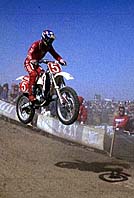
Photograph 1:Action Prediction AF (Focus Tracking)
Catching a jump of an off road bike. If it is the present AF's single reflex, even a middle of the road machine will be ok.
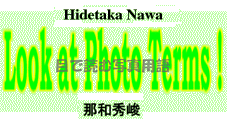
Most makers use the word 'Moving Prediction' but Nikon calls it 'Focus Tracking'. One of the capacities was that the 'Focus Tracking' 'no matter how many kilometers per hour the subject comes towards the camera, no matter how many meters away, the focus will adjust.
At present the one with the highest performance is the Nikon 5 which will be released in October, the next is the Canon EOS-1 NHS. The range of performance of the 'focus tracking' in standard cameras and amazing top class cameras is huge.

Photograph 1:Action Prediction AF (Focus Tracking)
Catching a jump of an off road bike. If it is the present AF's single reflex, even a middle of the road machine will be ok.
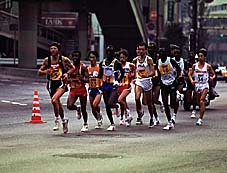
Photograph 2:Photographing a marathon using the Action Prediction (Focus Tracking)
The runner's relative speed is quite fast so if possible it's best to use a good camera.
When the subject is facing the light, light filters in naturally but, when taking portraits to the sun, or half towards the sun, a separate light is needed. By brightly shining the light using a strobe or reflector board (white or gold reflecting board) towards the person into the sun, you achieve the action of making the eye's sparkle at the same time.
The form of the light source (strobe or reflector board) is taken as it is so and if the eyes are enlarged, you'll be able to see what light source was used.
For example in the studio, if you use a lot of strobe or lights, you'll get the same amount of eye glare.
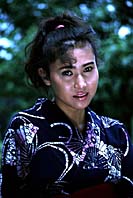
Photograph 3
Eye glare with a reflector board. It was quite a big reflector board and we were able to use the eye glare effectively. However it was probably very glarey for the model.
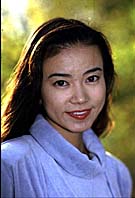
Photograph 4Eye glare using a strobe.
The strobe is an instant of light so it's not so bright for the subject being photographed. However, there's probably not enough. ot enough.